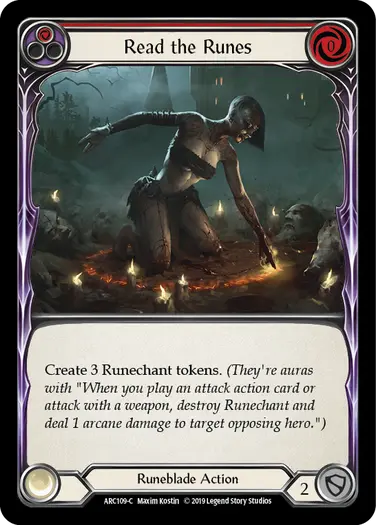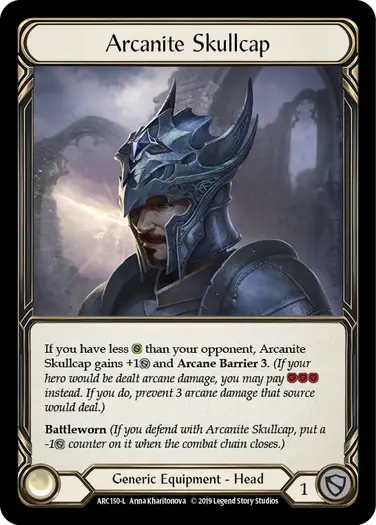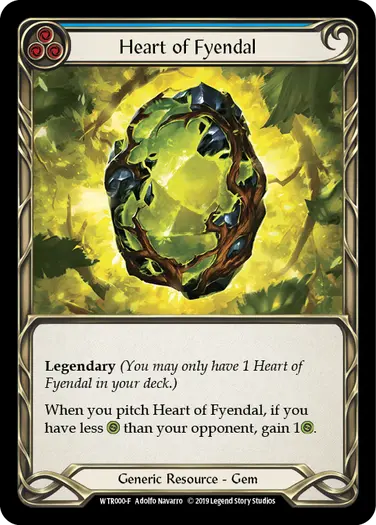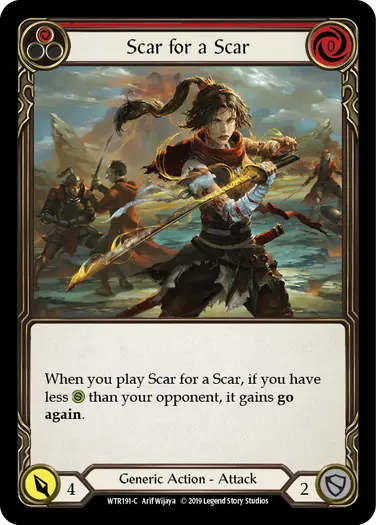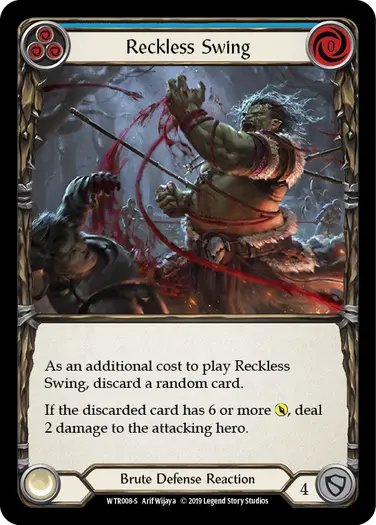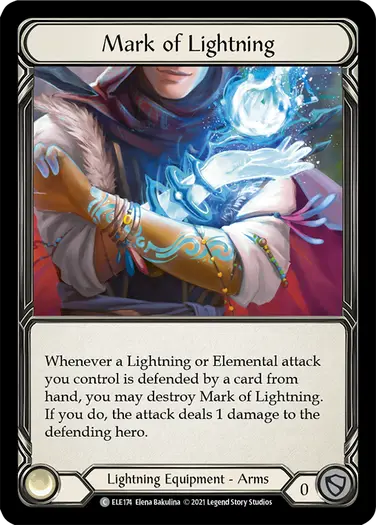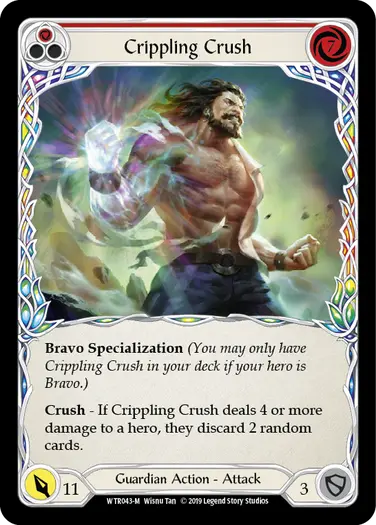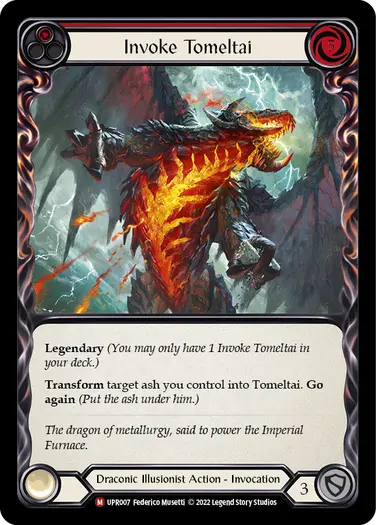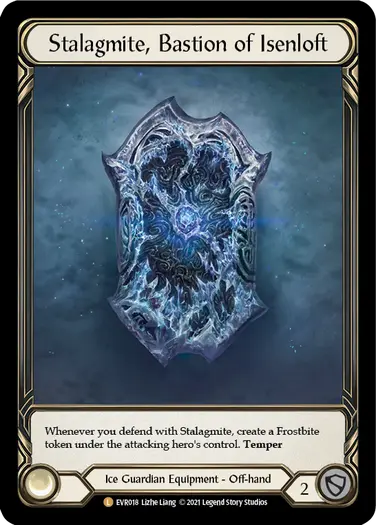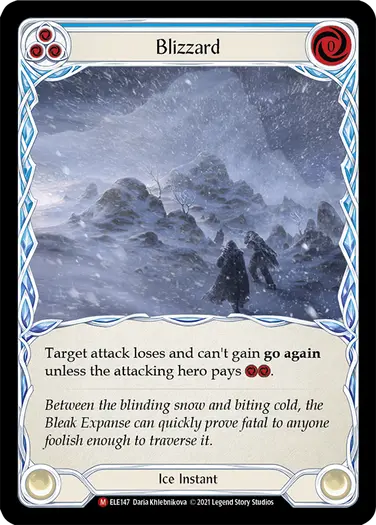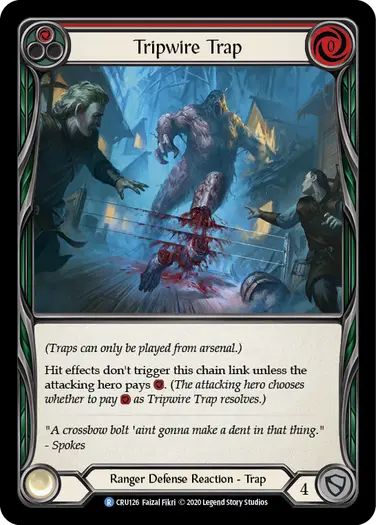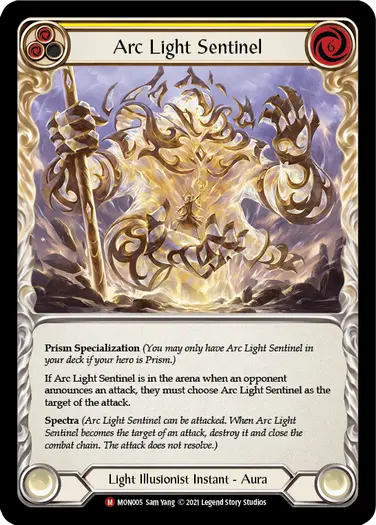For our second season of ProQuest, we've invited guest writer Wesley Lingard to work on a two-part article series for our website. Wesley is an Australian competitive player who aims to be one of the first to put points on the Living Legends table for Azalea. He has previously written strategy content for various platforms, and recently began uploading video content under the alias Endless Arrow. This is his second article, discussing how to optimize your defense!
Flesh and Blood pits heroes against each other in an epic deathmatch where you must constantly choose between offense and defense to steer the battle in your favor. In this clash, knowing how and when you defend is an important skill that you will need to outmatch your opponents. Since you only have access to a limited amount of health and cards you must learn how to decide which of the two to sacrifice from turn to turn.
At the beginning of the game, the player who goes second gets the benefit of drawing up at the end of the first player’s first turn. This grants the player going second the ability to defend with as many cards from their hand as is necessary because they will draw back up before their first turn. There are situations where your opponent will try to sneak damage through your defense on turn one, or avoid attacking to set up instead. However, if they play offensively it is often in your best interest to avoid taking damage, using your cards to defend. You can also use this opportunity to Keep one or two powerful cards in hand, defending with your other cards to have the chance at drawing a stronger hand for your turn. Remember that you can always over-defend attacks if you would prefer to draw different cards for your first turn.
If your opponent continually threatens you with powerful attacks every turn, and you keep defending them with your whole hand, when is it time to swap to the offensive? It is important to determine the value of your cards when given the opportunity to defend. Imagine your opponent attacks you for three damage without any effects. You have two cards left in your hand that defend for 3, but no matter which card you defend with you will reduce the damage you can deal on your turn by four. In this case, it would be better to take the three damage because you would be able to deal more damage than you would prevent defending. This is a simplified example to explain the idea of weighing the benefit of defending versus attacking, however, there can be other factors that affect this decision.
As your knowledge of the game becomes more advanced, you must consider whether or not defending or attacking may lead you or your opponent into running out of cards, whether losing health will put you at risk of losing on a following turn, whether reactions or instants will change the outcome of the attack, or whether you can do more damage (or win the game) on a future turn by changing your decision. In general, you should start by understanding your cards, planning out what you could do with them, and then when your opponent attacks, decide for each of your cards, who would benefit the most if you defend with it. For a card like red Read the Runes, although it doesn’t attack, it will contribute three potential damage if played, in the form of runechants, and should be valued similarly to a three damage attack.
One advantage some decks have is that they can attack multiple times in one turn. This means that they can attempt to bait out defending cards on earlier attacks, saving their important attacks with “on-hit” effects for later. These effects will either give your opponent direct benefits, such as drawing a card, or cause you to suffer a control effect. Control effects are effects that negatively impact you in some way, including discarding cards, increasing your costs, or preventing you from playing certain cards. You must do your best to predict when attacks with “on-hit” effects will be played, saving enough defending cards to prevent the effect from triggering. Using your defending cards before being threatened with powerful “on-hit” effects is exactly the situation you want to avoid, as you will either take the hit, trigger the effect, or be forced to defend with the cards you wanted to play. Keep in mind when defending that your opponent may have ways of preventing you from defending. Due to effects such as Intimidate, Dominate, and defense reaction prevention, you may need to consider defending early attacks if you predict not being able to use your defensive cards later in the combat.
Having equipment that you can use to defend during combat gives your hero extra options during the Defend Step. Although it is possible to defend with your equipment at any point during the game to make use of this advantage, some techniques can be employed to optimize the usefulness of your equipment’s defense. My most important tip is to defend as late in the game as you can without risking defeat. Across the card pool, there are a number of cards that are more powerful when the hero using it is on lower life. These cards include Arcanite Skullcap, Heart of Fyendal, and Scar for a Scar, just to name a few.
Using your equipment to defend early in the game without a good reason will more often than not create more advantages for your opponent. If your opponent is attacking you without threatening anything that takes effect when you take the damage, then you should strongly consider the benefits of saving your equipment for a future turn. There are times to use your equipment to defend, such as:
- The damage would reduce your health to zero or low enough for them to finish you off another way. You want to avoid losing to dominate, arcane damage beyond your ability to prevent it, and card effects like Reckless Swing or Mark of Lightning, depending on the hero you're versing.
- The outcome of the attack dealing damage would in some way allow your opponent to gain a significant advantage over you. This could mean using your equipment to help prevent a dominated Crippling Crush dealing four damage to trigger its Crush effect.
- Your equipment will be destroyed, or its defense reduced if you do not use it sooner. With new cards like Tomeltai coming out with Uprising, it may be important to use your equipment to defend early in the game to avoid wasting their defense.
- Your equipment can defend multiple times and to get all possible uses out of it means you would need to defend with it on the current turn or you may lose the game in a following turn.
Your equipment’s defense is an important tool that should be saved for when it can provide you with the most benefit.
With ice cards entering the game we have seen a big increase in disruptive defense cards. I am referring to things like Oldhim’s ability, Stalagmite, Bastion of Isenloft, and Blizzard. These cards are examples of control effects that can be used to reduce the impact of your opponent's turn. However, defensive disruption is not exclusive to heroes with Essence of Ice. Cards such as Tripwire Trap, Arc Light Sentinel, and Snag can be used to hinder your opponent mid-combat. The advantage to these cards is that they can significantly hinder your opponent's turn without giving them any foreknowledge of the impending control effect. Be careful when running these cards in your deck as they often come with high costs, are hard to play, or cannot defend. Therefore, it is worth sideboarding specific defensive disruption cards against some heroes
Different decks may require different defensive strategies, therefore you can use your sideboard to counter specific matchups. “Wide” aggressive decks that attack multiple times in a turn, often have a range of four power attacks. Since cards more commonly defend for three or less, it can help to sideboard defense reactions that defend for four, like Fate Foreseen and Sink Below. These reactions are also useful for playing around reactions and instants that can increase the damage of attacks. Against “tall” aggressive decks that tend towards doing one or two high power attacks in a turn, the most efficient way to defend them is with higher cost defense reactions. For example, having Unmovable in your deck against a hero like Bravo, Showstopper means you will have a better chance at preventing the Crush effect on his dominated attacks. Consider the matchups you have been struggling with the most and see if there is a defensive strategy you can add to your sideboard to make it easier.
As you continue to play Flesh and Blood, start to think through the different outcomes that could have been if you defended differently. Ask yourself “what would have happened if I didn't defend, fully defended, defended in a different order?” and look for the patterns that are the most successful. With time and practice, you will be able to make these decisions more naturally as you play, and begin to explore harder matchups and how you might improve them. As this ProQuest season wraps up, reflect on the lessons you have learned across your games. I wish you all the best with your practice and am excited to see how you all adapt to the upcoming set, Uprising.
Wesley Lingard is a competitive Flesh and Blood player and author of content relating to gameplay and strategy. The opinions expressed in the above article are his own and do not necessarily reflect the views of Legend Story Studios.
